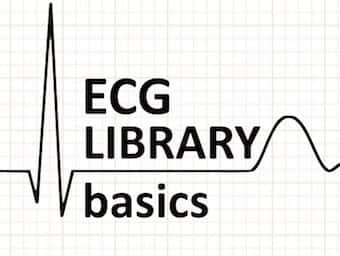
ST Elevation in aVR
ST elevation in aVR indicates subendocardial ischaemia due to O2 supply/demand mismatch - causes can be cardiac and non-cardiac

ST elevation in aVR indicates subendocardial ischaemia due to O2 supply/demand mismatch - causes can be cardiac and non-cardiac

Myocardial infarction diagnosis in the presence of left bundle branch block (LBBB) or ventricular paced rhythm. Sgarbossa Criteria

ECG features and causes of left axis deviation (LAD) using the hexaxial reference system. QRS axis between -30 and -90 degrees

Premature Junctional Complex (PJC) - premature beat arising from an ectopic focus within the AV junction. LITFL EKG library

Review of the different causes of Intraventricular conduction delay. QRS duration > 100 ms in the presence of a supraventricular rhythm.

A review of the different types of supraventricular tachycardia (SVT), with a focus on AV-nodal re-entry tachycardia (AVNRT)

ECG features of Idiopathic Fascicular Ventricular Tachycardia. AKA Belhassen-type VT, verapamil-sensitive VT or infrafascicular tachycardia.

Massive pericardial effusion produces a characteristic ECG triad of low QRS voltage, tachycardia, and electrical alternans. LITFL ECG Library

A review of the ECG characteristics of "fixed ratio blocks", i.e. second degree AV block with 2:1 or 3:1 conduction ratios.

Second degree heart block (2nd degree AV block) with a P:QRS ratio of 3:1 or higher, producing an extremely slow ventricular rate.

A review of the ECG features of Mobitz II 2nd degree AV block - Originally termed Hay block (1906) by Mobitz in 1924. ECG Library LITFL

A review of the basic ECG features, causes and pathophysiology of Mobitz I AV Block (Wenckebach Phenomenon) with some example ECGs.